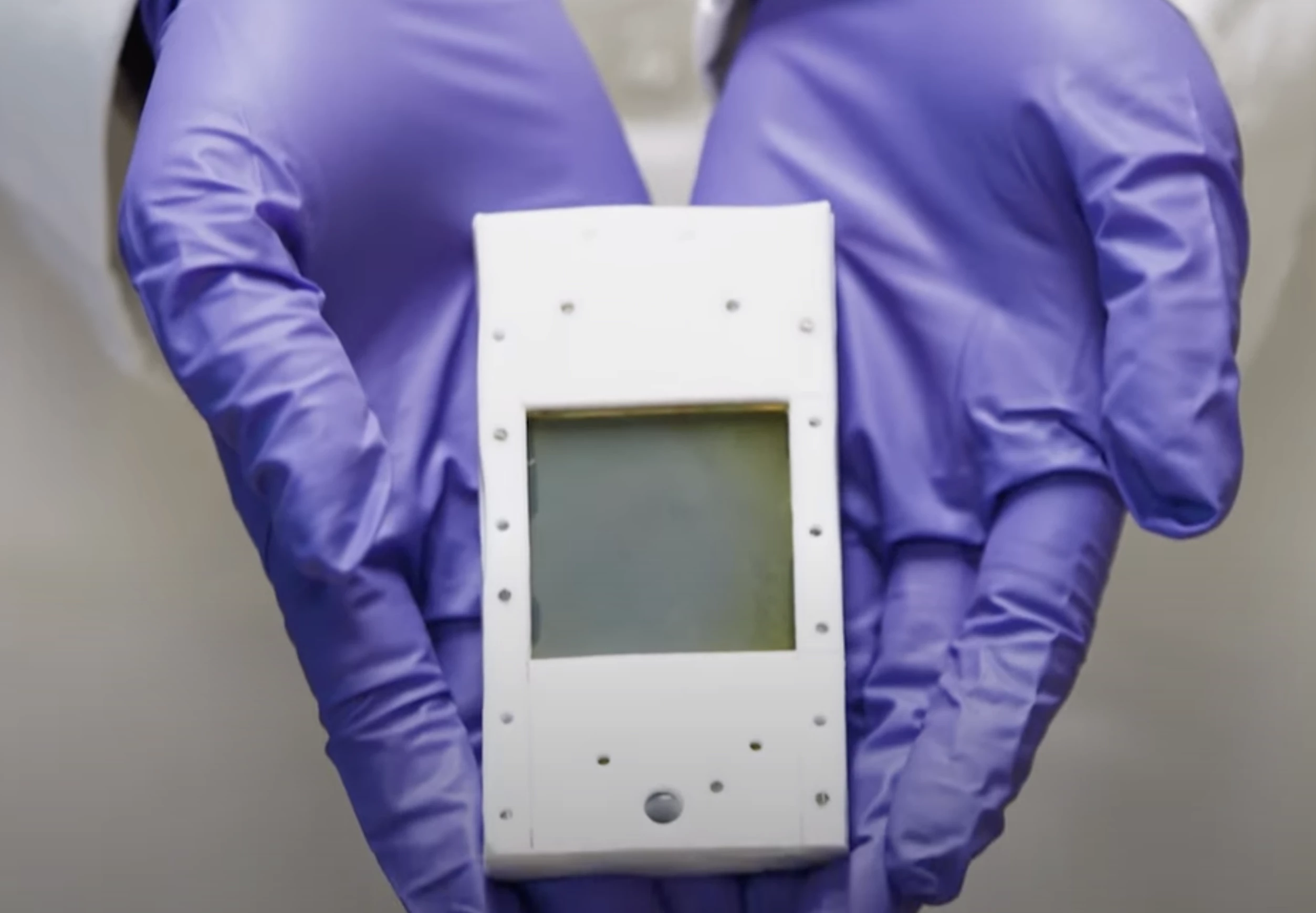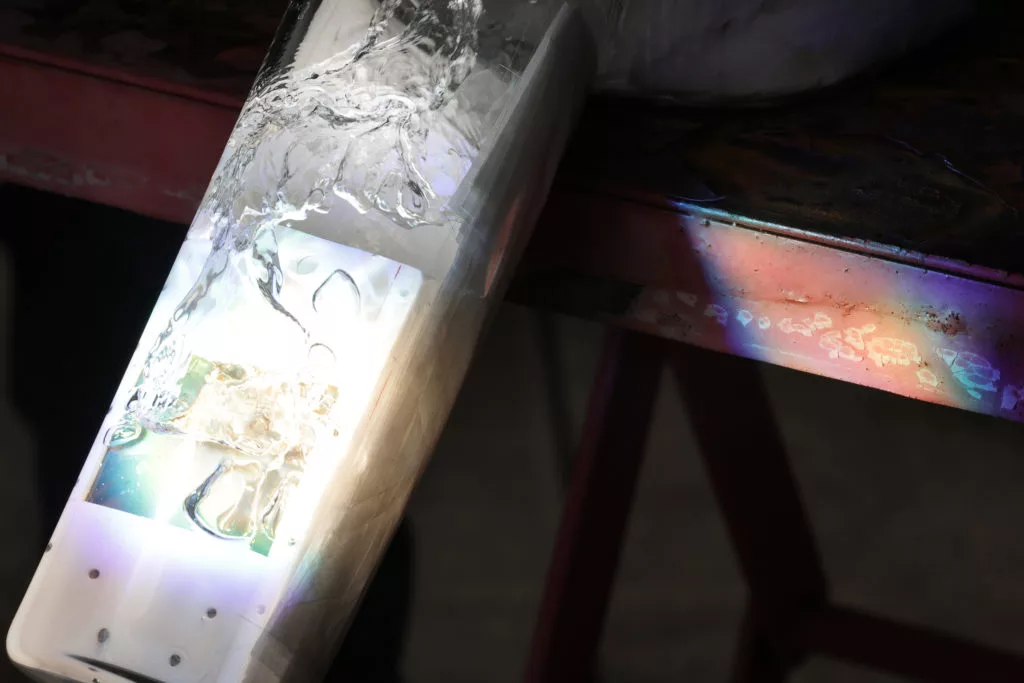We are a solar-powered planet; the vast majority of energy needed for life on Earth comes from the sun – and a lot of it, including food and fossil fuels, is the result of plant-based photosynthesis – the conversion of sunlight, water and carbon dioxide into oxygen and sugars. The first chemical step in photosynthesis happens in the chlorophyll that gives leaves their green color – and this step is effectively a water-splitting operation that breaks H2O into oxygen, which is released into the air (thanks, plants), and positively charged hydrogen ions, which drive the remainder of the process and eventually allow plants to store energy in carbohydrate form.
Evolution has delivered an extraordinary gift in photosynthesis, and as humanity works to free itself from the harmful side-effects of fossil fuels, researchers are working to replicate, and even improve on, this first step, hoping to develop artificial photosynthesis techniques that some predict will eventually be the cheapest way to produce green hydrogen, for use as an energy storage medium.
“In the end, we believe that artificial photosynthesis devices will be much more efficient than natural photosynthesis, which will provide a path toward carbon neutrality,” says Zetian Mi, a University of Michigan professor in electrical and computer engineering.
Mi and his team have just published a paper in Nature on what they consider to be a major leap in artificial photosynthesis. The team has demonstrated a new photocatalytic water-splitting semiconductor that harnesses a broad spectrum of sunlight, including the infrared spectrum, to split water at a solid 9% efficiency – nearly a tenfold improvement from other devices of its kind – and it's a tiny and relatively affordable device that improves rather than degrades over time.

“We reduced the size of the semiconductor by more than 100 times compared to some semiconductors only working at low light intensity,” said Peng Zhou, a research fellow in electrical and computer engineering and first author of the study. “Hydrogen produced by our technology could be very cheap.”
The new technology uses concentrated sunlight – an option that's not available to many other artificial photosynthesis devices, because high-intensity light and high temperatures tend to cause them to break down. But the UMich semiconductor – announced by a separate team last year and made from indium gallium nitride nanostructures grown onto a silicon surface – doesn't just withstand light and heat extremely well, it actually improves its hydrogen production efficiency over time.

Where other systems aim to avoid heat, this device depends on it. The semiconductor absorbs higher-frequency wavelengths of light to power its water-splitting process, and it's placed in a chamber with water running over it. Lower-frequency infrared light is used to heat the chamber to around 70 °C (158 °F), which accelerates the water-splitting reaction, while also suppressing the tendency of the hydrogen and oxygen molecules to recombine into water molecules before they can be separately collected.
The device achieved an efficiency of 9% in idealized lab testing using purified water. Moving to tapwater, it achieved around 7%. And in an outdoor test simulating a large-scale photocatalytic water-splitting system powered by widely variable natural sunlight, it returned 6.2% efficiency.
These photocatalytic efficiency figures lag behind some photoelectrochemical devices we've reported on, like ANU's cell at 17.6% or Monash University's device with a record-breaking 22%. But these devices appear to be more expensive by their nature, using photovoltaic cells to power electrochemical water-splitting; the US Department of Energy's ultimate technical targets for hydrogen production are 25% efficiency from photoelectrochemical systems and 10% for dual-bed photocatalytic systems – both representing a competitive hydrogen cost around US$2.10 per kg (2.2 lb), as calculated back in 2011.

Perhaps most exciting is the fact that the UMich device's 7% efficiency figure for tapwater also held true for splitting seawater. Fresh water is far from an infinite resource; it's already in critically short supply in many areas, and it's widely expected to become even more rare and precious in the coming decades. So a photocatalytic device that can pull hydrogen out of seawater without needing any external energy input other than sunlight could be a real game changer for the decarbonization age.
The team says it's working to improve efficiency in further research, as well as the purity of the hydrogen that comes out, but parts of the intellectual property developed here have already been licensed to UMich spinout companies NS Nanotech and NX Fuels.
"The materials we use," says Mi, "gallium nitride and silicon, can also be produced at large scale, and we can leverage the current infrastructure for low-cost, green hydrogen generation in the future."
As always, it'll be commercial viability that determines the fate of this device. Green hydrogen must be cost-competitive not only against dirty hydrogen produced using methane gas, but with cheap fossil fuels themselves if it's to work at scale. This method does rely on some rare metals, in terms of gallium and indium, but the cost hit here is drastically reduced by the tiny size of the semiconductors required. We look forward to seeing how it stacks up in industrial use.
The researched is published in the journal Nature.
Check out a video below.
Source: University of Michigan








